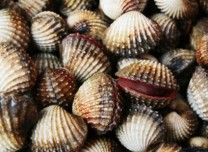
Biotoxins, also known as natural toxins, are toxic chemicals of biological origin that are not self-replicating, including those produced by animals, plants, and microorganisms that have toxic effects on other biological species. Lifeasible's testing team has the professional competence and experience to carry out a variety of biotoxin testing services to avoid product safety and trade risks. We can provide a wide range of biotoxin testing services to prevent product safety and trade risks.
Shellfish are filter feeders among mollusks, such as toxic algae in the environment and water bodies, and shellfish ingestion will accumulate in their bodies to produce shellfish toxins, which are often associated with toxic red tides. There are many types of shellfish toxins, and shellfish toxins are often classified as paralytic shellfish toxins, diarrheal shellfish toxins, memory loss shellfish toxins, and neurological shellfish toxins, according to the symptoms of poisoning in daily supervision. According to the chemical structure of shellfish toxins for classification, there are mainly stone house clam toxin group, chondrocyte algae acid group, Ota soft sponge acid toxin group, short naked algae toxin group, clam toxin group, scallop toxin group, and cyclic imine toxins. In addition to the common shellfish toxins, tetrodotoxin, another common biotoxin, can lead to safety risks for the consumption of river fish and weaver snails. Due to the extreme toxicity and rapid onset of action of biotoxins, certain shellfish, and other marine animals can be enriched with toxins, resulting in accidental human ingestion, or touching food containing these toxins can cause corresponding symptoms of poisoning, and are often lethal.
Lifeasible can provide integrated services from mollusk sample collection, sample lyophilization, tissue extraction, biotoxin testing, etc., and can develop customized testing services according to customer requirements.
1. Main detection methods
The existing methods for detecting shellfish toxins include mouse bioassay, high-pressure liquid chromatography, immunoassay, Raman spectroscopy, cellular assay, and other methods, as well as antibody immunoassay, nucleic acid aptamer sensor and toxin-binding protein analysis based on the interaction analysis of toxin-specific recognition molecules.
2. Service categories
Biotoxins: Clam toxin group, chondrogenic acid group, Ota soft sponge acid toxin group, short naked algae toxin group, clam toxin group, tetrodotoxin, scallop toxin group, and cyclic imine toxin, etc.
If you are interested in our services, or if the service you want is not listed, please feel free to contact us, and we will get back to you as soon as possible.
Lifeasible has established a one-stop service platform for plants. In addition to obtaining customized solutions for plant genetic engineering, customers can also conduct follow-up analysis and research on plants through our analysis platform. The analytical services we provide include but are not limited to the following:
Get Latest Lifeasible News and Updates Directly to Your Inbox
Mechanisms Regulating Plant Chloroplast Biogenesis
April 15, 2025